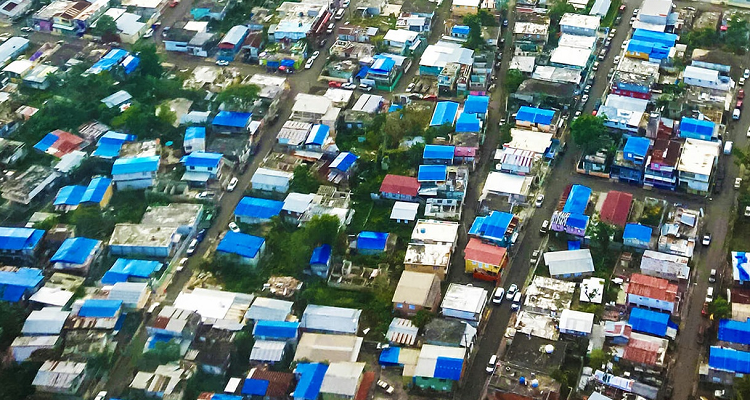Disaster “preppers”, survivalists, camping enthusiasts and now government agencies are on to something that the broad population has yet to notice. Tarps provide a high level of physical insurance in the context of emergencies and disaster situations. Witness the quintessential blue tarp often seen covering many roofs following a disaster, this need is not been lost on those who focus ensuring the protection of family, homes and possessions. Indeed, the availability and use of tarps are now becoming recognized as an indispensible storage item for survivalists and preppers who stockpile tarps for emergency repairs of roofing, windows and doors following a hurricane, tornado, severe thunderstorm with high winds, earthquakes, and more recently, ground fires. Many also consider the potential for other forms of disaster, where transportation and electrical systems are disrupted from economic crises or civil unrest, and long periods of time would pass before repair materials could be obtained. Roofing contractors are well aware of this, as many carry a robust supply of blue roofing tarps for use in a quick response mode in many island nations prone to sever storms.
Table of Contents
Blue Tarps Used to Protect Homes after Storms
Tarps for Sheltering
Survivalists also focus on a wide range of applications that can preserve and even save lives. Many survivalists stockpile lightweight tarps for use as an emergency lean to shelter when a tarp in not available. Conversely, camping enthusiasts use tarps to provide ground covering underneath the their tents, as this preserves the integrity of the tent floor and provides a protective layer of insulation from direct contact with the ground, as well as added protection from stones and rocks. There are also uses for laying the tarp directly over a tent as a layer of insulation and protection from debris (falling branches, ice cycles, etc.,) or even intrusion attempts by wild animals. In other cases, the tarp can be suspended just slightly above the tent and extend further out to provide a porch roof area between the tent and camp fires. Many campers also like to have a tarps staked to the ground directly in front of their tent to provide a clean seating area for sitting, laying down or food preparation.
Tarp Covering a Tent
Another use found by survivalists and campers alike is the multipurpose use of Camouflage Tarps as per above, as these can also be repurposed to create a hunting blind for large or small game, and can also be used to suspend game and/or foodstuffs in trees away from the campsite that prevents animal access to the food. Remember, Tarps are more useful in such activities as they allow clean and safe spaces to place items on the ground and allow people to step on freely without risk of injury, insect bites and or identifying potential threats (i.e., poisonous snakes).
Tarps Used as Emergency Sleeping Bags
Many are unaware of the existence of insulated tarps, but these can provide many dual uses. One preferred by survivalists is the use as emergency sleeping bags, which can help you stay warm and dry during storms or extended period of cold periods during the winter. It is a great option for vehicle storage for those who forget to wear or carry heavy clothes when on their trips. Knowing how to fold these tarps saves you from laying on the dust, and this makes a good seal during the camping period.
Tarps for Greenhouse Coverings
Constructing a greenhouse is expensive when you use glass panes. However, the use of clear tarps can provide a means to construct a greenhouse that provides great surroundings to enclose plant starts and/or onsite food production in the event of a major protracted disaster. With good access to sunlight which makes the plant life grow more rapidly, a DIY greenhouse can provide a long term source of food. For them to be productive, they need to be secured thoroughly by typing down to stakes and wooden framing, but the results are more than worthwhile.
Tying Down is Critical for using your Tarps
Good preparation in securing your property with tarps and tie downs help prevent them from getting damaged during a storm. There might be challenges when learning how to fold goods to provide cover, but when you fully engage in it and know how to do it, the chances of loss of utility or damages are reduced greatly. So in this vein of thought, take care to protect your tarps by using tie downs, bungee cords, stakes and rope to fix your tarps as appropriate. You can also buy tarps with brass or aluminium grommets that will make it easy to secure your tarps.
Conclusion
The knowledge you obtain in this article about tarps, consider having them for different purposes and make sure you utilize them in numerous ways to protect your family, home, business, pets and possessions.






















Comments